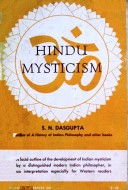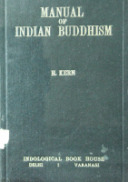Tìm Sách
Sách tiếng Anh-English >> Hindu Mysticism
Thông tin tra cứu
- Tên sách : Hindu Mysticism
- Tác giả : S. N. Dasgupta
- Dịch giả :
- Ngôn ngữ : Anh
- Số trang : 168
- Nhà xuất bản : Frederick Ungar Publishing Co. Newyork
- Năm xuất bản : 1959
- Phân loại : Sách tiếng Anh-English
- MCB : 1210000004956
- OPAC :
- Tóm tắt :
PREFACE
Both on the continent and in America, Hindus are associated with mysticism, but, so far as I know, the subject of Hindu mysticism has as yet received no systematic treatment, either in the way of general introduction, or in the way of a comprehensive account. The man in the street cannot, as a rule, distinguish between the lower and the higher forms of mysticism. He looks upon mysticism in general with some kind of superstitious awe or reverence, and he thinks of it as an obscure and supernatural method by which, in some unaccountable manner, miraculous feats may be performed or physical advantages reaped—departed spirits made visible, fortunes told, muscles developed, riches earned without effort, dangerous and incurable diseases cured by simple amulets or blessings, infallible prophesies made, and the like. I shall not say anything as to whether or not such phenomena are possible, for my present interest concerns not facts but beliefs. But whether or not the phenomena actually occur, they imply beliefs that there are short cuts to the attainment of advantages through mysterious, supernatural or miraculous powers undiscoverable by reason. I refer to this as inferior mysticism, because the purposes relate solely to the attainment of inferior mundane benefits. Distinguishable therefrom is the belief that the highest reality or the ultimate realisation and fulfilment (whatever may be their nature) cannot be attained by reason alone, but that there are other avenues to them, namely, the firm and steady control of will, the development of right emotions, or both combined, or by them both along with the highest functioning of reason. This is superior and true mysticism because it is directed to the liberation of the spirit and the attainment of the highest bliss.
Mysticism in Europe has a definite history. In spite of the variety of its types, it may roughly be described to refer to the belief that God is realised through ecstatic communion with Him. With the Islamic mystics, the Christian mystics, and the devotional mystics or bhaktas of India, the vision of God and His grace is attained through devotional communion or devotional rapture of various kinds. But in all these mystics, we find a keen sense of the necessity of purity of mind, contentment, ever alert striving for moral goodness, self- abnegation, and one-pointedness to God. There can be no true mysticism without real moral greatness. This mysticism should therefore be distinguished from a mere delusory faith that God often grants us a vision of Him or appears to us in dreams, or from a faith in the infallibility of the scriptures and so forth, for the latter are often but manifestations of credulity or of a tendency to believe in suggestions, and may often be associated with an inadequate alertness of critical and synthetic intellect.
I have defined mysticism as a belief or a view, but in reality it means much more than that. In the life of the true mystics, beliefs exert a great formative influence. They are no mere intellectual registrations of opinions or temporary experiences, but represent the dynamic, the dominant tone of their personality as it develops and perfects itself. Mysticism is not an intellectual theory; it is fundamentally an active, formative, creative, elevating and ennobling principle of life. I have not here taken note of poems or thoughts involving merely mystical beliefs but have touched only upon those which are the outward expressions of a real inner flowering of life in the persons of those who have tried to live a saintly life of mysticism.
Mysticism means a spiritual grasp of the aims and- problems of life in a much more real and ultimate manner than is possible to mere reason. A developing life of mysticism means a gradual ascent in the scale of spiritual values, experience, and spiritual ideals. As such, it is many-sided in its development, and as rich and complete as life itself. Regarded from this point of view, mysticism is the basis of all religions— particularly of religion as it appears in the lives of truly religious men.
An acquaintance with Indian religious experience shows that there are types of religious and mystical experience other than that of an intimate communion with God. I have therefore made my definition of mysticism wider, so that it may include not only the Islamic, Christian, and the Bhakti forms of Indian mysticism but other types of Indian mysticism as well. I could not hope to give an exhaustive analysis or even a fairly comprehensive treatment of the chief features of the different types of Indian mysticism within the limits of these six lectures. I have therefore attempted only a brief general outline of some of the most important types, indicating their mutual relations, sometimes genetically and sometimes logically. I have omitted all reference to the connected metaphysical issues, as a comprehensive treatment of these philosophical problems may be found in my “A History of Indian Philosophy” (Cambridge University Press), the first volume of which has already been published and the other volumes are in the course of publication.
I have first described the sacrificial type of mysticism. This cannot in all its particulars be regarded as a mysticism of a superior order, but it develops many features of the higher types and marks the starting- point of the evolution of Indian mysticism. I have then discussed the four chief types of mysticism: the Upanishad, the Yogic, the Buddhistic and the Bhakti, though there are many branches of these particular types upon which I could not enter. I have mentioned some other minor types of mysticism. In addition there are some which are of a syncretistic nature, exhibiting elements of belief and duties of two or three distinct types of mysticism in combination. I could not present them all. The five main types that I have here described, however, may be regarded as fundamental; and, though very much more could have been said in the way of elaboration and illustration, all their striking characteristics have been briefly touched upon and materials have largely been drawn directly from the original sources. I hope that I may in the future have an opportunity to take up the subject again and to deal with it more elaborately.
Perhaps I should have entitled the present volume “The Development of Indian Mysticism”. But the word “Indian” might be misunderstood in America. I have therefore selected “Hindu Mysticism,” “Hindu” standing for Indian. I have dropped the word “Development” to avoid any initial impression of forbidding technicality. For similar reasons diacritical marks have been omitted.
I now have the very pleasant duty of thanking the Harris Foundation Lecture Committee which did me the honour of asking me to deliver these lectures and President Walter Dill Scott, Professor Edward L. Schaub and Professor T. W. Koch, the Secretary of the committee. Considering the high reputation of my predecessors, who were outstanding scholars in their respective branches of learning, I feel extremely diffident about my own humble performance. I have received so much hospitality and kindness in America that I shall always think of this great country with appreciative enthusiasm and admiration. But I can never express adequately my gratefulness and thanks to Professor Edward L. Schaub, who was chiefly responsible for my invitations to the American Universities and who helped me so generously in seeing these lectures through the press, as well as in suggesting many changes of style and expression—to say nothing of his personal courtesies and cordiality which will always endear his name to me.
S. N. Dasgupta.
Calcutta, India, 1927.
ANALYTICAL TABLE OF CONTENTS
Preface
LECTURE I – Sacrificial Mysticism
- Rig Veda and Atharva Veda, the earliest religious documents of the human race. Their probable dates.
- Atharva Veda consists mainly of hymns, of charms, and of incantations. Rig Veda consists mainly of hymns and of prayers for prescribed rituals.
- Nature of Vedic ritualism.
- Strictest accuracy in the performance of all ritualistic details was deemed indispensably necessary for realising the fruits of the sacrifices; since reason was unable to discover why this should be so, the hymns and the ritualistic directions were above reason and therefore had no author; they were self-existent and eternal.
- The entire Vedic literature was conceived as being only a body of commands. This conception of commands did not imply any commander.
- The mysterious powers of the sacrifices can produce all kinds of physical advantages.
- The mysterious conception of Vedic commands.
- Simple prayers of the primitive sages of the Vedas show how deeply they were impressed by the inexplicable phenomena of nature which led them to believe in deities presiding over these phenomena.
- Revelation in the Vedic sense. The Vedic commands are impersonal infallible, and eternal.
- Reason must be subordinated to Vedic revelation, and truths discovered by reason should be attested by reference to the Vedas.
- Definition of mysticism.
- Special features of sacrificial mysticism.
- Development of sacrificial mysticism into substitution-meditations.
- Some forms of substitution-meditations are found even now in India among certain sections of the people.
- The development of substitution-meditations marks a new stage of advance towards the liberation of thought from the narrow limitations of sacrificial mysticism. Loose generalisation of thought, made such an advance possible.
- How the substitution-meditations contributed towards the development of the idea of Brahman, the supreme reality, as the identity of being, thought and bliss.
- How the monotheistic Vedic hymns contributed towards the formation of the concept of Brahman.
- The mysterious force of sacrifices and the idea of Brahman.
- The dawn of a quest of Brahman.
- Transition from the worship of deities to the highest realisation of truth and reality, the Brahman.
- The rise of the Upanishad literature, which deals with the growth and development of the concept of Brahman, also called the Vedanta.
LECTURE II – Mysticism of the Upanishads
- Monotheistic hymn of Hiranyagarbha.
- Though monotheistic passages are found in the sacrificial manuals, the emphasis is nevertheless almost wholly on the sacrificial system.
- The science of Brahman is based wholly on the fact that the spiritual needs of man always tend to transcend the limitations of his mundane necessities. Modern civilisation tends to stifle this higher call of man by seducing him to earthly desires. The story of Prajapati and Virocana.
- The story of Maitreyi and Yajnavalkya illustrates the spiritual longing of man in Maitreyi’s craving for immortality.
- The highest state of immortality is a supra-conscious, ineffable state of mystic experience, where there is not the duality of the knower and the known.
- The supra-conscious experience underlies our so-called personality as its background, essence or truth—as the true self which is dearest and nearest to us and for which everything is dearer to us.
- This experience is ultimate and fundamental in its nature—the ultimate reality, as the ground of all things.
- This quest after the highest reality which is also our ultimate intuitional experience—a belief in a superior impersonal principle, the inmost essence of man, which enlivens our thoughts, actions and feelings is the chief feature of Upanishad mysticism.
- The story of Naciketas and “what becomes of man after death.” Philosophical quest of truth preferable to a life of mundane comforts.
- Growth of materialistic civilisation leads us away from the transcendent spiritual ideals of life.
- The highest spiritual essence can be realised only by inner intuitive contact and not by logical reasoning.
- The fundamental essence of man is the inner illumination of pure thought, which is also the ultimate principle underlying all things.
- This immortal essence cannot be grasped by intellect, but only realised by superior intuition, and this is the mysticism of the Upanishads.
- There is another and different line of thought which conceives Brahman as the supreme lord who moves our life and sense faculties to activity.
- A mythical story to illustrate the fact that all natural objects, such as fire, wind, etc., derive their respective functions and power from this supreme lord.
- Yet this supreme creator and sustainer of the universe, and the inner controller of us all, is in some other passages spoken of as having become the visible many of the universe though he is in Himself one.
- The dualistic tendency of God, soul and the world, is very prominent in some passages, while side by side with it there are many passages of an apparently pantheistic import.
- Yet the Upanishads seem to emphasise very strongly the view of ineffable and ultimate experience realised by direct intuition.
- Interpreters of the Upanishads differ as to which of these strains of Upanishad thought is most fundamental. But in the life of a true Upanishad mystic all the apparently contradictory lines of thought find an untold harmony and expression incomprehensible to logical thought.
- The mystic experience in the Upanishads can be attained only through the most rigorous moral discipline of self-abnegation, self-control and peace, by untiring and patient search and by inner intuitive vision of the spirit. The highest state is absolutely indescribable.
LECTURE III – Yoga Mysticism
- Perfecting of moral life is indispensable for the realisation of upanishad truth, and references to self-control are found in some of the Upanishad passages.
- Modes of sense-control prevalent in India since at least 700 or 800 B. C.
- Story of a hypnotic trance in the Mahabharata.
- The root of most forms of Indian mysticism is its theory of the self as pure consciousness and the ultimate principle of all that exists.
- The concept of “I” and the true self.
- It is difficult for modem Western people correctly to understand and appreciate the spiritual aspirations of the great sages of ancient India—so different are the physical and social environments of the restful hermitages of ancient India from the modem centres of civilisation of Western countries.
- Spirit and mind distinguished. The ultimate aim is to break the bondage of the mind.
- Mind grows through conscious and subconscious impressions and states, and yoga consists in the cessation of all mental states.
- The seer is sensitive to the slightest pain, and his aim is to uproot all pains and future possibilities.
- The great positive virtues which a yogin must practice.
- Indispensable moral acquirements of a yogin.
- In addition to these, a certain course of bodily and mental discipline is also considered indispensable.
- Various bodily practices, including breath control, etc., have to be undertaken to stop all movements of the body, voluntary and involuntary.
- Some of the processes of purifying the body by internal washings.
- The aim of yoga concentration by which the mind is steadied is different from ordinary concentration. By it the mind becomes fixed in an object, and for the time all mental functions of differentiation, association, etc., cease—absorptive concentration or samadhi.
- Gradual advancement on yoga lines through faith and energy.
- The intuitional knowledge of prajna—final destruction of the mind necessary for the liberation of the spirit.
LECTURE IV – Buddhistic Mysticism
- Detachment from antipathy and attachment, supreme self-control, and absolute desirelessness considered indispensable by yoga for the liberation of the spirit.
- Legendary account of the way in which the Buddha was led to the path of yoga.
- The way to Nirvana as absolute extinction of the mind is through absolute desirelessness, right discipline, and yoga concentration.
- Difference between the system of the Buddha and the system of Patanjali with regard to the ultimate goal.
- Goal as Nirvana and as the absolute liberation of the spirit.
- Belief in Nirvana is the basis of Buddhist mysticism.
- The idea of liberation and the idea of essenceless Nirvana are very similar to each other.
- A digression in the way of referring to other forms of mysticism, as, for example, a belief in tapas, asceticism and self-mortification as able to lead to our highest realisation.
- Different types of ascetics.
- Supernatural power ascribed to tapas or self-mortification.
- Tapas as self-mortification contrasted with tapas as the power of endurance of physical privations and as self-control.
- The Buddha found the old course of excessive self- mortification and rigor undesirable and took to a moderate course.
- Virtues of universal friendship, compassion, etc.
- In the Hindu scheme of virtues, caste virtues and caste duties often time narrowed the scope of universalism.
- Universal friendship was the active creed in Mahayana Buddhism.
- Different grades of Buddhas.
- Story of Aryadeva’s universal compassion.
- The career of a Bodhisattva.
- The virtues of a Bodhisattva.
- The moral progress of a Bodhisattva.
- Universal good the ultimate aim of the Bodhisattva.
LECTURE V – Classical Forms of Devotional Mysticism.
- Yoga ideal of individualistic perfection.
- Hindu system of life not individualistic, but based on a caste system of the social order.
- Hindu system of caste duties.
- Philosophy of the Gita emphasises the need of the dedication of all actions and their fruits to God.
- Self-surrender to God is the ideal of the yogin of the Gita.
- The ideal of love of God in the Puranas.
- Ramanuja’s conception of love of God as ceaseless contemplation of God.
- Bhakti or devotion to God is found to be a revival of the yoga method in later times.
- Love of God as a supreme emotion in the Bhagavata Purana.
- Special features of the path of Bhakti contrasted with the older path.
- For whom is the path of devotion intended?
- Vallabha’s definition of Bhakti; his doctrine of prapatti or self-surrender.
- The doctrine of prapatti contrasted with the doctrine of Bhakti of the Bhagavata.
- Mysticism in the emotion of Bhakti.
- Love of God an indispensable factor of religious psychology.
- Place of reason and emotion in religion.
- Passion for God as illustrated in the life of Chaitanya of Bengal.
- The legend of Krishna.
- Chaitanya’s life.
- Chaitanya’s passionate love of God.
LECTURE VI – Popular Devotional Mysticism
- God as great and God as the dearest.
- Spiritualisation of the events of Krishna legends and vicarious participation in the life-drama of Krishna.
- God as father and mother.
- Different concepts of Bhakti.
- Vallabha’s notion of Bhakti as pushti.
- How human love becomes divine.
- Candidasa’s ideal of the transformation of human love into divine.
- Love of God in South-India, in the songs of the Alvars.
- Relation of the old Bhakti -school to the new school of Bhakti—Khecar, the teacher of Namdev.
- Essence of Namdev’s teachings.
- Tukaram and his hymns of devotion.
- Love of God in the North-Indian saints.
- Kabir, his reformatory spirit and his love of God.
- Love of God a great leveller.
- Some hymns of Kabir showing his reformatory zeal.
- Some hymns of Kabir illustrating his views on purifi- tion and his great intoxication for God.
- The mystic Rui Das.
- The mystic Mira Bai.
- Mira Bai’s hymns illustrating her great love of God.
- The mystic poet and Saint Tulsidas.
- Mystic feelings of the people in general who are often illiterate.
- The value of spiritual longing cannot be expressed in terms of utility.
 Facebook
Facebook
 Google
Google
 Google+
Google+


















